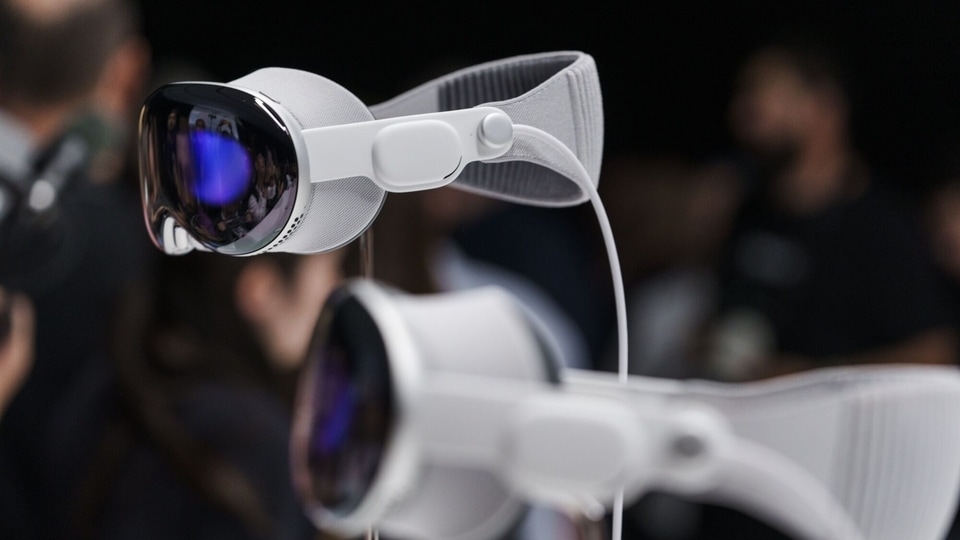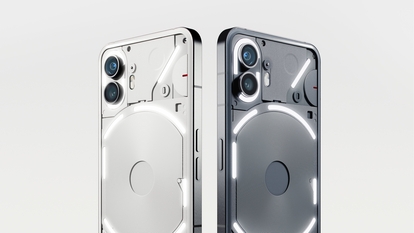WWDC: Apple’s Pricey New Headset Is Not to Be Dismissed
While consumers might hesitate to wear a device resembling ski goggles, the Vision Pro shows promise for making mixed reality appealing.

Let's start with a big caveat: We don't know how Apple's Vision Pro headset will handle the real world.
After years of anticipation, Apple on Monday unveiled the headset — which mixes elements of the digital and physical world — and offered big promises on performance and mainstream potential.
Only extensive use of the device, rather than Apple's promotional videos or its highly controlled demo environments, will reveal whether Apple has another iPhone-like hit on its hands — or rather, on our faces. Will it be comfortable to use the device for extended periods, or will it make some users queasy? Will we adjust to wearing what looks like high-tech ski goggles, or will it feel silly to put it on in public? Will consumers be willing to spend $3,499 on the device once it goes on sale next year?
Wall Street evidently wasn't impressed by the price or the time frame: After a day of stock market gains that pushed Apple to record highs and within distance of a $3 trillion market cap, its shares fell as the world took in what the company had spent years developing.
But it's way too soon to write off Apple's entry into what the company Monday called “spatial computing.” Indeed, even if Apple's initial device fails to gain traction, what we saw at Monday's launch demonstrated potential for becoming an essential new computing platform.
Apple has done what many technology observers had thought impossible. It has made mixed-reality computing interesting and appealing. Unlike competing devices, which leave the wearer feeling closed off, Apple is promising a device that reduces the intrusiveness of the technology as much as possible. The headset wearer's eyes are visible to those around them, allowing a simulation of eye contact without needing to remove the device. It's a feature that in time I expect will become standard on every mixed-reality device and will feel so obvious we'll forget it ever needed inventing.
A dial on the unit allows the wearer to increase or decrease the level of immersion depending on personal preference. Dial it one way to block out the world around you, or open things up if you would rather not feel shut off from your surroundings. This choice will likely make it more practical to wear for longer periods.
Navigation in the device is controlled with your eyes and your hands and not, as Apple's presentation made note, using the clunky controllers needed for other devices, such as those for rival Meta Platforms Inc.'s Quest headset. The new operating system, visionOS, keeps the visual language of the iPad and iPhones, and with it, a sense of familiarity with how apps work.
All this is made possible by Apple's existing dominance in hardware. A video call can be made to users who are on iPhones or iPads, for instance, and wellness features pair up with the Apple Watch. In the office, the link between MacBook and headset leaves clunky VR office software offered by Meta and others in the dust.
Ironically, Facebook parent Meta might benefit from the Vision Pro rollout. Its headset is available today, and costs just a fraction of the Apple device. The new Meta Quest 3, announced just last week to grab a few days of headlines before Apple's launch, costs $499 and already boasts a healthy catalog of apps and games.
But in time Apple's product ecosystem will surely win out, making Vision Pro, and whatever iterations follow, a market leader — albeit in a product segment that, at around 35 million users in the US, is still small. To greatly increase adoption, Apple needs to rally its vast legions of third-party developers to create innovative uses for what is currently an extremely expensive device.
A deal with games development platform Unity is a start — and compatibility with existing iPad augmented reality apps means there will at least be some things to do from day one. But it will be a challenge to convince developers to pour resources into a device that for a long time will have a tiny number of users.
Until then, it will feel as though the device doesn't do all that much beyond recreating existing things we do — stream movies, browse the web or take part in video calls — only in a way that feels bigger to the eye.
But that's the reality of a first version. The first iPhone didn't have an app store. The Apple 1 computer, released in 1976, barely did anything at all by today's standards. As it happens, that first Apple computer cost $666, or about $3,500 in today's dollars.
Both the iPhone and the Apple 1 spoke to a computing future that until that point hadn't been fully imagined. In time, the cost of Vision Pro will drop; the battery pack will become unnecessary and other limitations will be ironed out. The device will get thinner, lighter and cooler.
Apple can't claim to have invented it mixed reality, of course, but in its typical fashion it has brought innovation and smart design to a category that had been severely lacking in both. Just don't call it the metaverse, OK?
Dave Lee is Bloomberg Opinion's US technology columnist. Previously, he was a San Francisco-based correspondent at the Financial Times and BBC News.
Catch all the Latest Tech News, Mobile News, Laptop News, Gaming news, Wearables News , How To News, also keep up with us on Whatsapp channel,Twitter, Facebook, Google News, and Instagram. For our latest videos, subscribe to our YouTube channel.

























